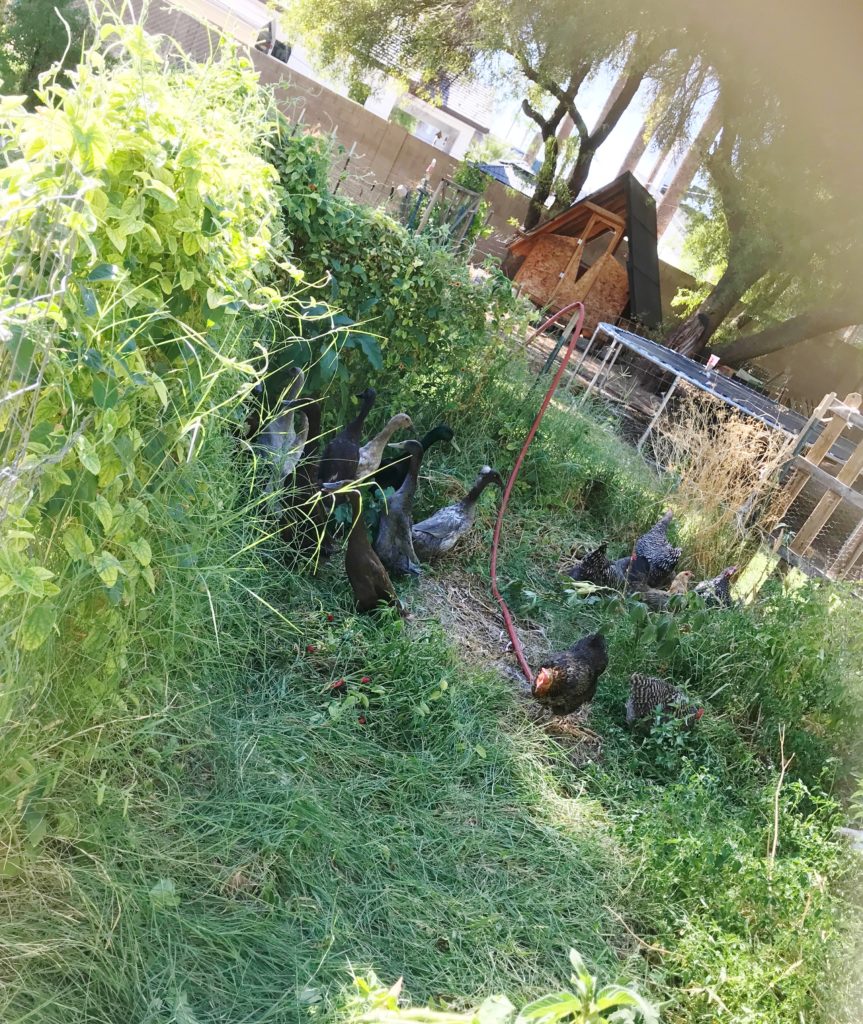
This is supposed to be a garden–one of three in my back yard. As you can see, it’s overgrown with weeds and Bermuda grass. I’d had high hopes for it this past summer: I was going to plant my first monsoon garden (more on monsoon gardens soon) in early July, and I was very excited about it.
And then, on June 19th, while jumping over the side of our pickup truck, my Achilles tendon tore from my heel bone. I was completely off that foot for four weeks, in a boot for ten, and will be in physical therapy for many months to come. A crushing blow.
My very busy family had some tough decisions to make: How much could we keep, and what must we let go, to preserve a high maintenance urban farm for the months to come? Was it time to entirely call it quits?
The animals would get to stay, we decided; the family could do the morning and evening chores. We set up a system so that I could still milk, and having only one goat to milk suddenly seemed like a blessing rather than a curse. With our bi-monthly flood irrigation, the fruit trees would be ok. But the gardens would have to go. I took a leave of absence from managing our nearby community garden. I grieved every day, and am still grieving.

But that wasn’t the only setback:
This past winter, my beloved goat Hattie stopped walking on her two front feet and began crawling around on her knees instead. I’d always had trouble trimming her hooves, but I tried again, looking for infection as I went. (There was none.) Even with trimmed hooves, she didn’t walk. She was awfully fat; she’d been dry and unable to get pregnant for three years, and an inactive goat that isn’t producing babies or milk will gain weight. I brought in the vet and got the hard news: She had a structural problem with her legs and feet. She was in pain, and would never get better. Worse, it was genetic. Somehow, despite her excellent pedigree, some old gene had popped up in her; and her daughter, whom we also owned, was likely carrying the gene, although she seemed to have no problem with her feet. The compassionate, responsible thing to do was to put Hattie down humanely, and then give her super friendly daughter away as an unregistered pet; thereby taking them both out of the gene pool. I was now left with only one female goat, and I was crushed. Sobbing, many days in a row. Not just for me, but for Sheba, who would now lose her only two companions. Again the question: Are we done?

This is one of the scariest parts of any kind of farming: A major injury can be the death of a dream, the death of an income. Living things won’t wait: They and their environment must be cared for every day, no exceptions. We are fortunate that Jeff works an outside job; this is the survival plan of so many farming couples. But when one partner breaks down, the other is left to shoulder the whole load, and it’s just impossible to keep up. It took us some time to find the silver lining in this heavy cloud, but it did eventually begin to shine.
Next up: New Life, and the Doldrums
